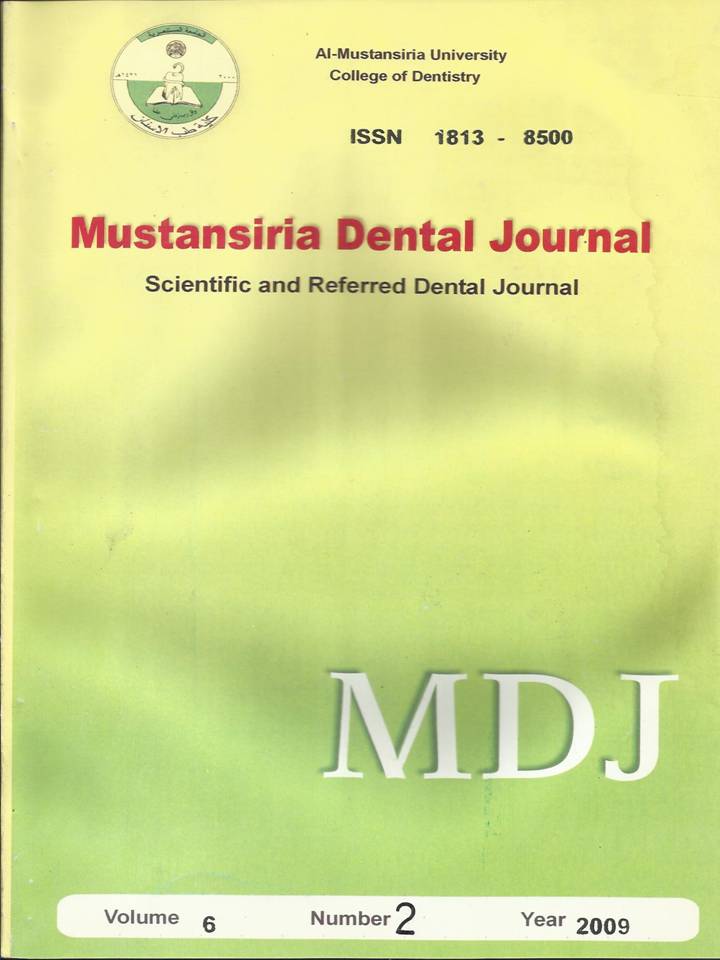Bacteraemia Following Different Orthodontic Treatment Procedures
DOI:
https://doi.org/10.32828/mdj.v6i2.434Keywords:
Keywords: Bacteraemia, Orthodontic treatment proceduresAbstract
The purpose of this research was to estimate the percentage and nature of bacteraemia following four orthodontic treatment procedures which were: an upper alginate impression, separator placement, band fitting or placement, and arch wire adjustment on a fixed appliance. The study group consisted of 40 patients (25 females and 15 males) ranging from 17-25 years of age attending Orthodontic Department in the College of Dentistry/Baghdad University, and out patients department from private clinic. The 40 patients were divided into four groups (10 patients each). A cannula was inserted into either the left or right antecubital fossa using an aseptic technique. A 5ml of blood was taken immediately before orthodontic treatment procedure and a second 5ml sample was taken 1-2 minutes after the procedure.
The blood samples showed a percentage of bacteraemia of 50%, 40%, 30%, and 20% in cases of post-band placement, post-separator placement, post-arch wire adjustment, and post-alginate impression procedures respectively.
This investigation demonstrated that the placement of separator and fitting of band procedures could cause a significant bacteraemia, thus these procedures for patients at–risk of bacterial endocarditis should be placed in consideration, and the orthodontist should be advised to consult the patient's medical specialist for controlling and prescribing the necessarily antibiotic coverage.
Downloads
Published
Issue
Section
License
The Journal of Mustansiria Dental Journal is an open-access journal that all contents are free of charge. Articles of this journal are licensed under the terms of the Creative Commons Attribution International Public License CC-BY 4.0 (https://creativecommons.org/licenses/by/4.0/legalcode) that licensees are unrestrictly allowed to search, download, share, distribute, print, or link to the full texts of the articles, crawl them for indexing and reproduce any medium of the articles provided that they give the author(s) proper credits (citation). The journal allows the author(s) to retain the copyright of their published article.
Creative Commons-Attribution (BY)









